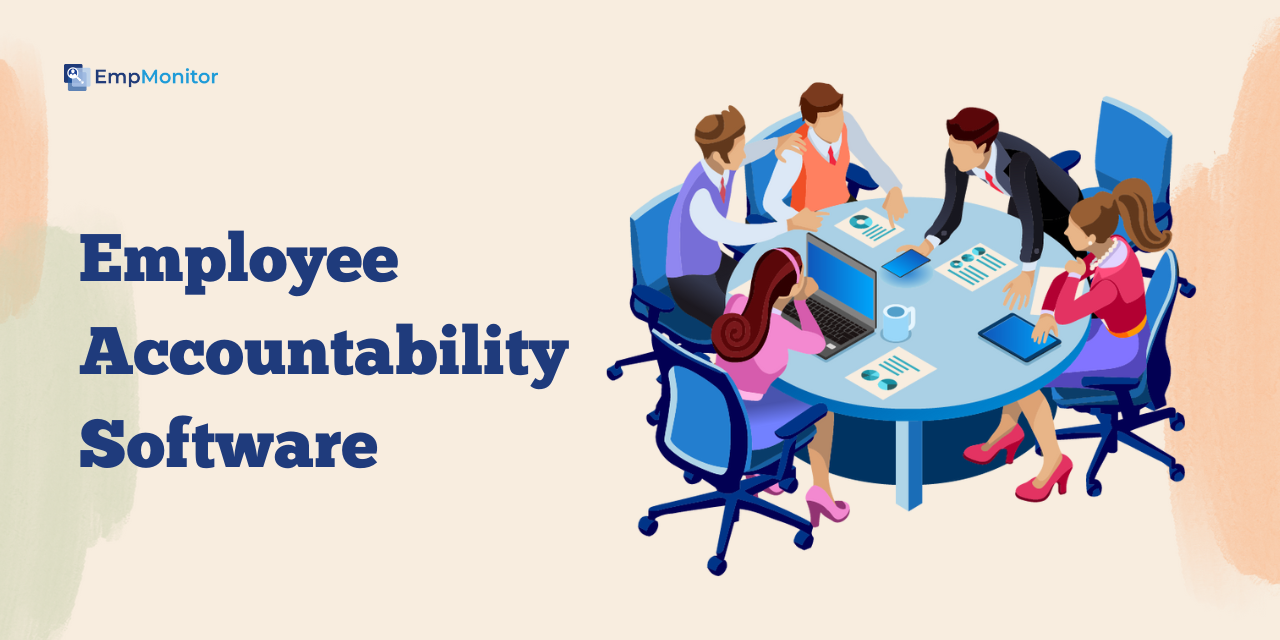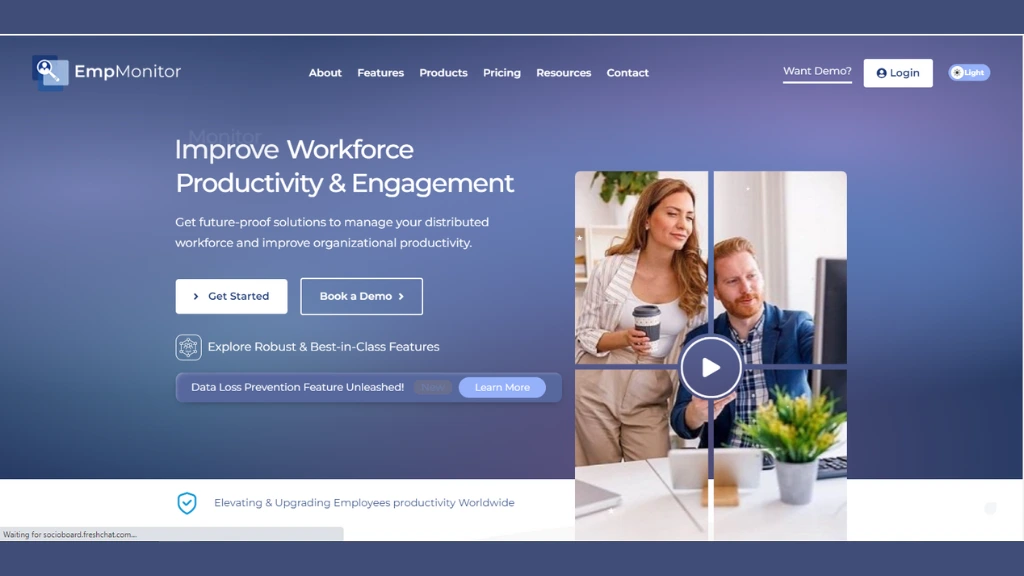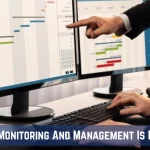A positive work environment acts as a fuel for employee well-being and productivity. In a supportive atmosphere, individuals feel valued, which leads to increased job satisfaction and motivation. Creating a positive work environment is closely tied to promoting employee accountability. Accountability refers to taking responsibility for your actions and contributing to a culture of responsibility within the organization. It is crucial for a happy and productive workplace. That is the reason for the popularity of employee accountability software because accountability is part of building a productive workplace.
In a friendly workplace, people are happy to take responsibility because they know their efforts matter. They feel appreciated for their contributions and see how they benefit the team. This positive atmosphere makes employees more eager to do their part and be accountable for their tasks.
Short on time? Listen to the blog instead!
What Is Employee Accountability?
Employee accountability involves employees becoming responsible for their actions. It can be on an individual level, where each person takes ownership of their tasks, or collectively, with colleagues holding each other accountable. Establishing an organizational culture around accountability contributes to a healthier work environment.
Some employee accountability examples are simply being answerable for tasks, meeting deadlines, and contributing to the overall success of the team or company. Accountable employees take initiative and understand the impact of their efforts on the organization’s goals.
Boosting team accountability can be achieved using employee accountability software. This type of software typically provides features that assist in task management, goal setting, performance tracking, and communication within the workplace.
The main idea is to ensure that each team member understands their responsibilities and recognizes how their work contributes to the company’s goals. It contributes to ensuring that individuals are aware of their tasks, deadlines, and overall performance expectations. It plays a crucial role in developing a sense of accountability.
The use of software becomes critical in this context, leading to the question of how to effectively utilize employee accountability software.
How To Use An Employee Accountability Software –
Here is a step-by-step guide on how to utilize employee accountability software:
-
Select the right software:
Choose an employee accountability software that suits the needs and goals of your organization. Consider features like task management, goal setting, performance tracking, and communication tools.
-
Customize for your organization:
Customize the software as per the requirements of your organization. Customize the settings and workings of the software.
-
Introduce the software to employees:
Clearly explain to your employees the purpose, benefits, and daily operational use of the software. Provide training if needed.
-
Encourage real-time tracking:
Create a culture of real-time tracking by encouraging employees to update their progress regularly. It provides managers with a real-time view of ongoing activities.
-
Review and adjustments:
Regularly review the effectiveness of the employee accountability software in meeting organizational goals. Make necessary adjustments to processes and goals or introduce new features as needed.
-
Use performance analytics:
Utilize the performance tracking and analytics features to evaluate the performance of individuals and the entire team.
Employee accountability software can greatly enhance employees’ accountability by enabling effective tracking, monitoring, and performance improvement.
Now, let’s look at some,
Reasons Why Your Team Needs Employee Accountability Software –
Following are the reasons why a team needs employee accountability software:
- Enhanced Productivity: Employee accountability software provides tools for task management, real-time tracking, and performance analysis. Employees can become more productive when they are aware of their responsibilities, deadlines, and overall performance.
- Clear Communication: With features like real-time collaboration and communication platforms, accountability software assists in clear communication within the team. It ensures that employees are clear about goals, reducing misunderstandings and promoting efficient teamwork.
- Goal Alignment: Using software ensures that every team member understands their tasks and how they affect the company’s objectives. It ensures that every team member understands their role in achieving broader company goals that can help to move in a positive direction.
- Time Management: The software streamlines time management through automated tracking, prioritization, and reminders of deadlines. It helps employees optimize their work hours and stay accountable for meeting deadlines.
- Employee Development: Many accountability tools include features for employee training and development tracking. It ensures that employees take responsibility for their professional growth, with managers providing the necessary support and resources.
- Adaptability and Flexibility: Employee accountability software supports flexible work arrangements by enabling remote monitoring and collaboration. This adaptability ensures that employees can maintain accountability regardless of location, promoting a modern and responsive work environment.
- Increased employee satisfaction: Efficient task management tools and resources lead to increased job satisfaction. Recognizing employee contributions and aligning them with organizational goals creates a positive work environment that boosts morale.
- Problem Solving: With real-time tracking and reporting, the software empowers teams to identify and address challenges. This approach to problem-solving ensures that issues are solved quickly, minimizing problems in workflow.
- Streamlined Workflow: It assists organizations in streamlining workflow by offering a dedicated platform for task management, communication, and performance tracking. It leads to smoother collaboration and more efficient project execution.
- Enhanced Decision-Making: The data and insights generated by it contribute to informed decision-making. Managers can make strategic decisions based on performance metrics, ultimately leading to improved team efficiency and effectiveness.
All the above reasons showcase how your team can benefit from employee accountability software. All these reasons are also examples of employee accountability activities exhibited by accountable employees.
Implementing employee accountability software like EmpMonitor provides a solution for organizations looking to optimize team performance and communication and create a culture of accountability.
Also Read –
How To Boost Team Accountability In The Workplace
Make Your Employees More Productive With Six Simple Tips!
Elevating Employee Accountability with EmpMonitor –
Empmonitor is a workforce management software designed to assist organizations of all sizes. This versatile tool offers a range of features for efficient employee management and employee accountability.
It helps businesses make informed decisions, increase employee productivity, and promote a healthy work environment.
It offers a range of powerful features designed to enhance workforce productivity, accountability, and engagement.
Essential features of EmpMonitor for employee accountability:
-
Time Tracking:
EmpMonitor tracks employees’ time spent on various tasks and activities, offering insights into productivity and helping ensure efficient utilization of time.
-
Attendance Monitoring:
The software monitors employee attendance, including clock-in and clock-out times, breaks, and time off. It ensures everyone sticks to their schedules and reduces instances of missed work.
-
Activity Monitoring:
It tracks employee activities on their computers, including websites visited, applications used, and key inputs typed, providing visibility into how time is spent during work hours.
-
Screenshots:
The software captures screenshots of employee desktops at regular intervals or when certain activities occur, providing visual evidence of work progress and ensuring accountability.
-
Productivity Analysis:
EmpMonitor analyzes employee productivity based on various metrics such as time spent on tasks, completed projects, and goals achieved, enabling managers to identify top performers and areas for improvement.
-
Real-time Alerts:
The software sends real-time alerts to managers when certain predefined conditions are met, such as excessive time spent on non-work-related websites or unauthorized software usage, enabling quick reactions.
-
Customizable Reports:
It generates customizable reports that provide detailed insights into employee activities, productivity trends, and adherence to company policies, facilitating informed decision-making and performance evaluations.
-
Remote Work Monitoring:
With the rise of remote work, EmpMonitor offers features tailored for monitoring remote employees, such as VPN tracking, activity logging, and performance evaluation tools for distributed teams.
-
Compliance and Security:
It ensures compliance with data privacy regulations and implements security measures to protect sensitive employee information collected during monitoring activities, maintaining trust and confidentiality.
All these above features are reasons for creating a sense of accountability in an employee’s mind for an organization.
Remember, EmpMonitor goes beyond simple tracking; it aims to empower organizations and their teams for better performance.
All in all, it can help to create a positive work environment where employees are accountable and collaborate to achieve bigger goals for the organization.
Conclusion –
To sum up, employee accountability software stands as a crucial tool in developing a culture of responsibility, transparency, and productivity within organizations.
By providing comprehensive monitoring, tracking, and reporting capabilities, these platforms empower both employers and employees to uphold standards, meet objectives, and drive success.
As we adapt to a constantly changing and remote work environment, investing in capable accountability software like EmpMonitor doesn’t just improve how well things run but also builds trust, teamwork, and long-lasting progress.
Utilizing such technology is not a want anymore it has become a need for organizations committed to achieving success in this era.














